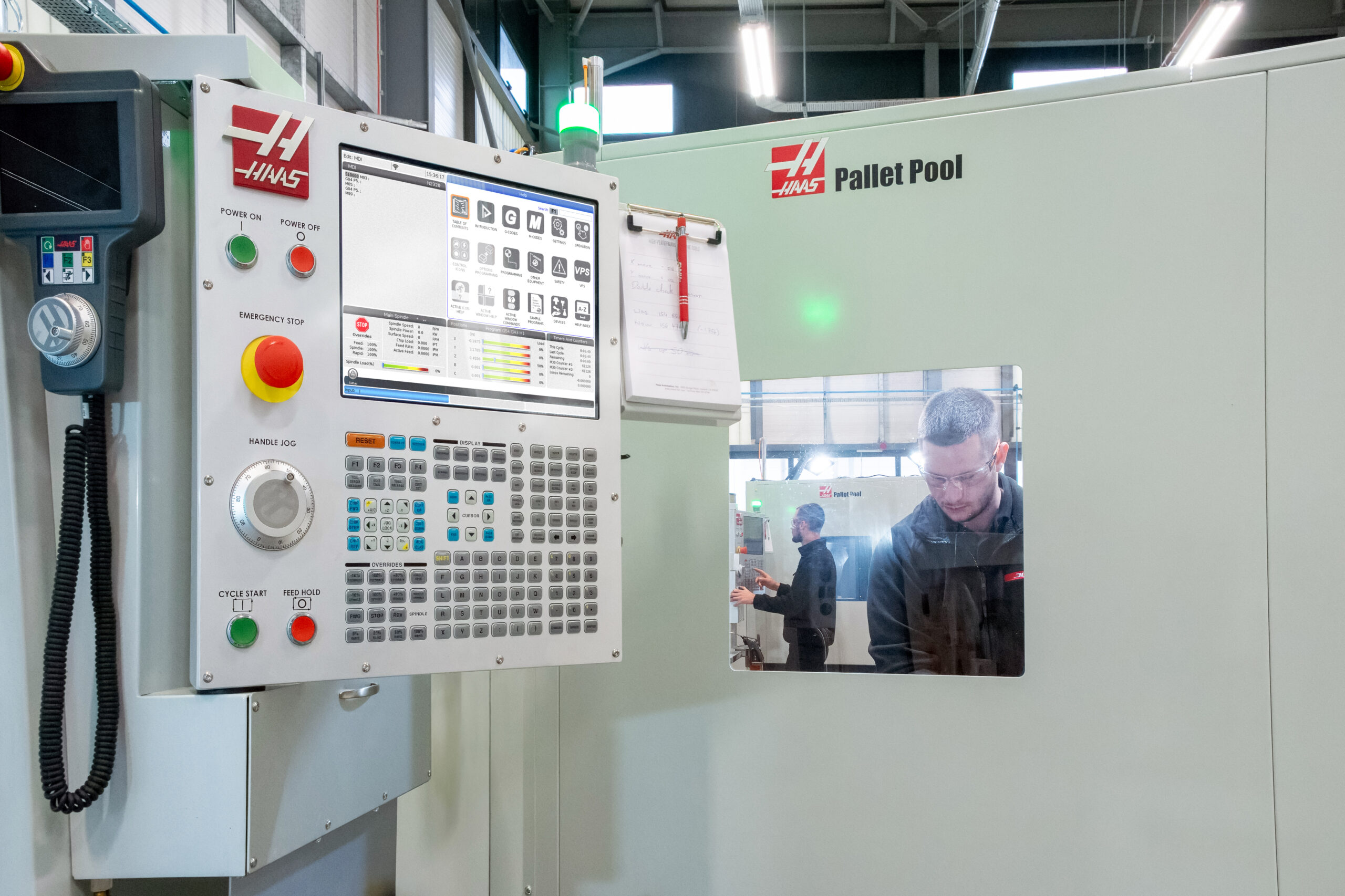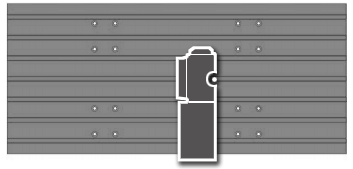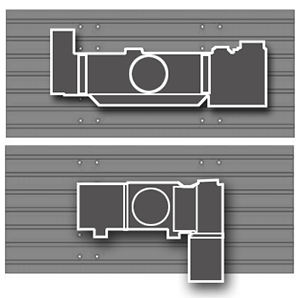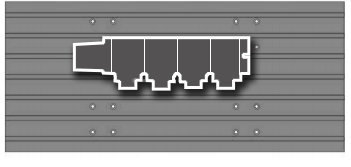Jota advanced engineering
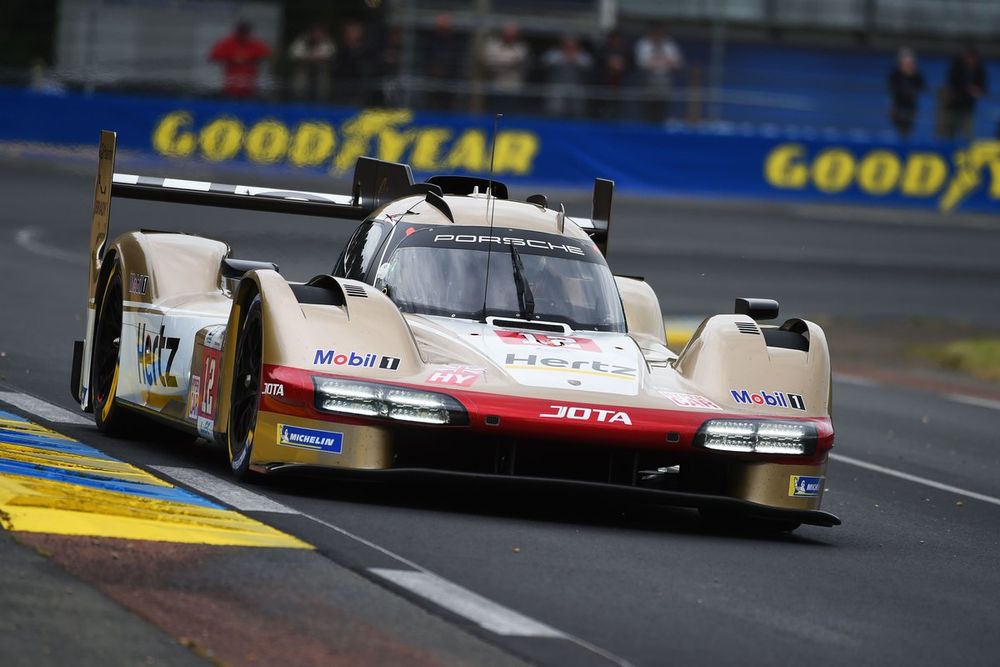
To ensure its motorsport racing team continues its longstanding success, JOTA Advanced Engineering has deployed a number of new machines and automated systems from Haas Automation
Success has become second nature to JOTA Advanced Engineering and JOTA Sport. Over the past twelve years, JOTA Sport has secured thirteen class podium finishes in the prestigious Le Mans 24 Hour race. Recent championship titles include the, FIA Hypercar World Cup & LMP2 Teams Endurance Trophy, firmly establishing JOTA Sport as one of the most experienced and successful sports car teams in recent memory.
The Hypercar class of the FIA World Endurance Championship, in which JOTA Sport currently competes, is the top-tier category with factory cars from Porsche, Ferrari, BMW, Peugeot, Toyota & Lamborghini. JOTA Sport currently campaigns two private Porsche 963’s with drivers that include F1 World Champion Jenson Button. The entire car, including its 4.6 litre V8 engine, weighs only 1,030kg.
The manufacturing side of the business was founded purely to support the race team. After a couple of years of successfully doing so, in-house engineer Ryan Goodger proposed to the business owners that they expand to offer sub-contracting services. Initial enquiries soon grew into substantial orders, which could not be managed with the existing equipment. As a result, Ryan was tasked with acquiring CNC machines for the newly established JOTA Advanced Engineering.
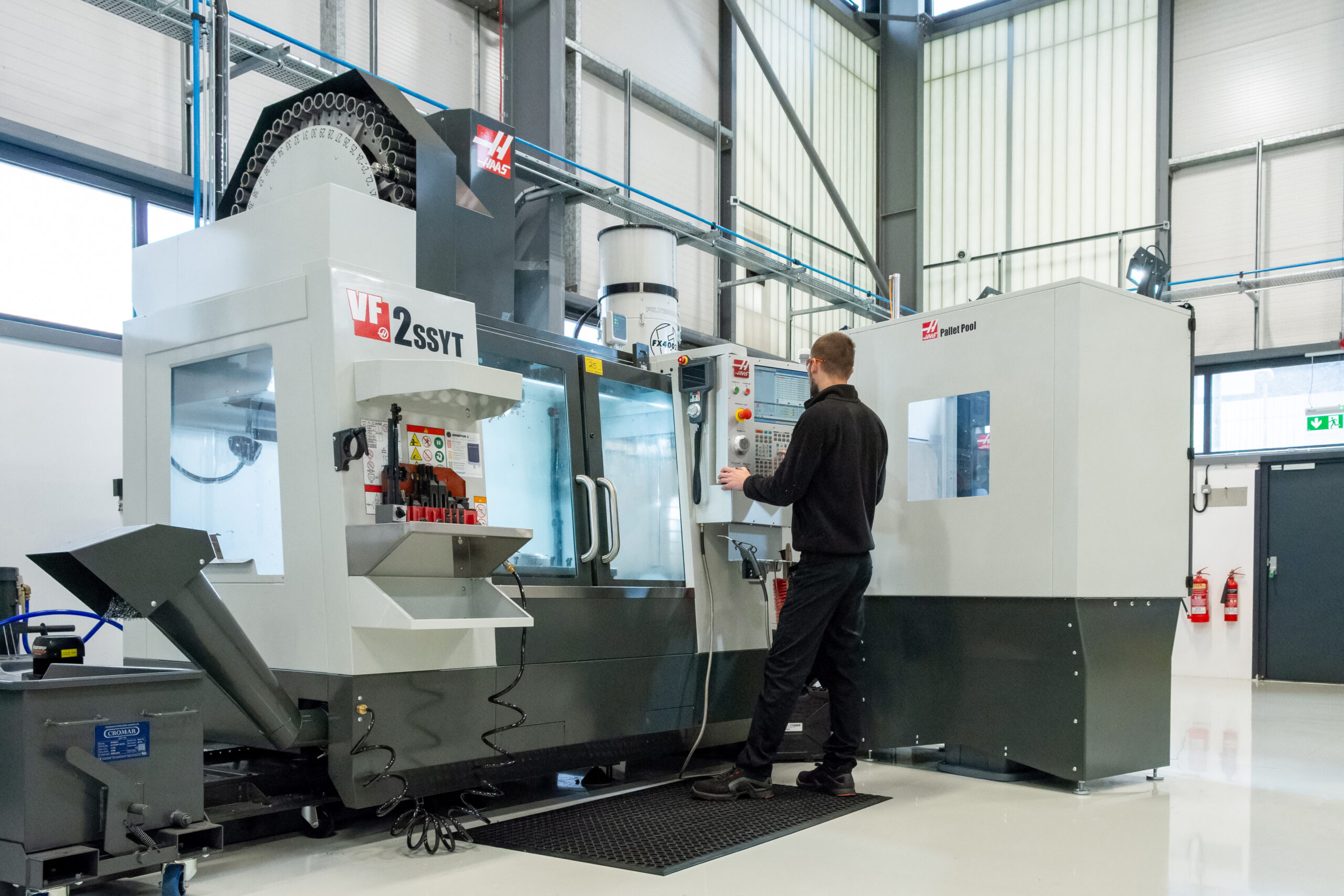
“I’d used Haas machines previously,” explains Ryan, now a director of the company. “I knew they couldn’t be beaten on cost, reliability or service.” Four new Haas machines were chosen; a Super Mini Mill vertical machining centre, ST-10Y and ST-30 turning centres and a UMC-750 5-axis machining centre.
“The variety of machines has given us the flexibility to manufacture a wide range of components. For instance, we can produce small plastic parts on the Super Mini Mill, while handling half-metre diameter turning on the ST-30 lathe. The Y-axis on the ST-10Y is ideal for smaller parts, helping cut costs by reducing cycle times and the number of operations.
“Our UMC-750 was one of the first in the country to be installed, and even after ten years, it continues to perform exceptionally well. Whether we’re running simple 3 axis work or more complicated full 5 axis jobs. It can take multiple operation jobs with fixtures down to two operations, with fewer set ups there is less risk to the job and increased accuracy. We really like the large window and open space in the machine, it makes the difference when we need to get a large workpiece in or want to measure a job.”
Another Haas UMC-750 was added to the collection, along with a VF-4SS vertical machining centre and DS-30Y turning centre. The VF-4SS has a 12,000-rpm spindle and high speed 30+1 side mount tool changer “ideal for some of the new production jobs we run,” while the 30 horsepower DS-30Y combines dual-spindle turning with Y-axis, C-axis and live tooling to create a powerful “done-in-one” machining solution.
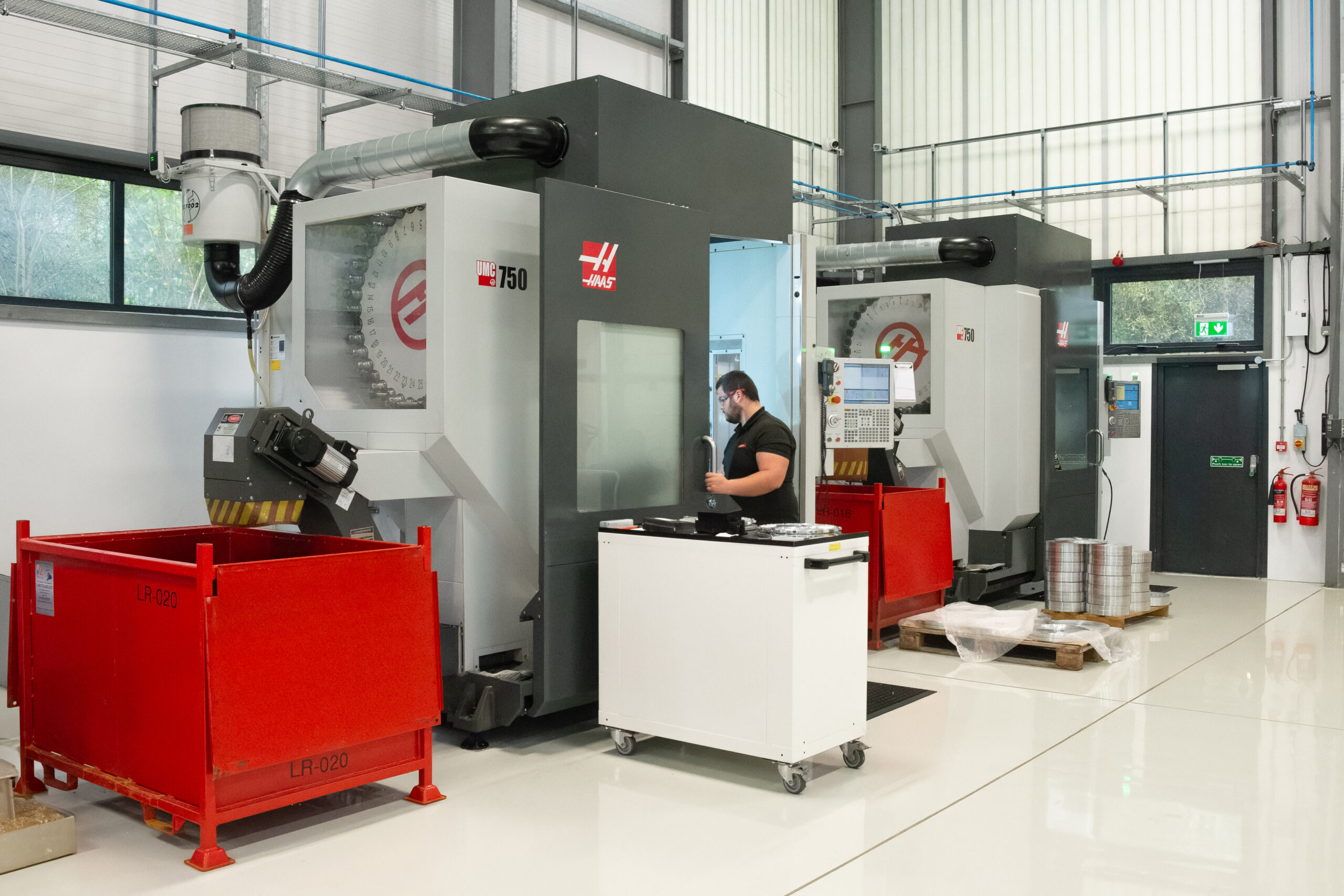
“This machine went straight to work on a new project manufacturing tough steel forging. We knew we needed decent power in both the main and sub-spindle. It’s been the ideal choice for the job.”
JOTA Advanced Engineering has recently completed the renovation of a new facility in Hastings, East Sussex, which now houses 17 Haas machines, including seven newly acquired ones. Covering 1,300 square metres, the new site is four times larger than the original factory in Kent, which has now been fully repurposed to focus exclusively on the racing division.
“Customer demand is higher than it has ever been, and we had reached our limit in both floor space and working hours. The new facility has provided us with significantly more capacity and will play a key role in future-proofing the business.”
The two new VF-2SSYT vertical machining centres were ordered with a Haas Pallet Pool System which integrates seamlessly with the Haas control. “Previously, whenever our operators had the doors open to check on parts, it meant the machine wasn’t cutting. Now with the pallet pools, they can load and unload while the machines continue in production.”
Ryan also opted for a Haas Robot Package; a fully integrated, plug and play 6-axis robot also controlled directly through the Haas machine. “We have jobs where the operator is simply reloading without changing offsets. The robot enables us to make better use of the operator elsewhere. The pallet pool and robot systems make lights-out machining simple and effective.”
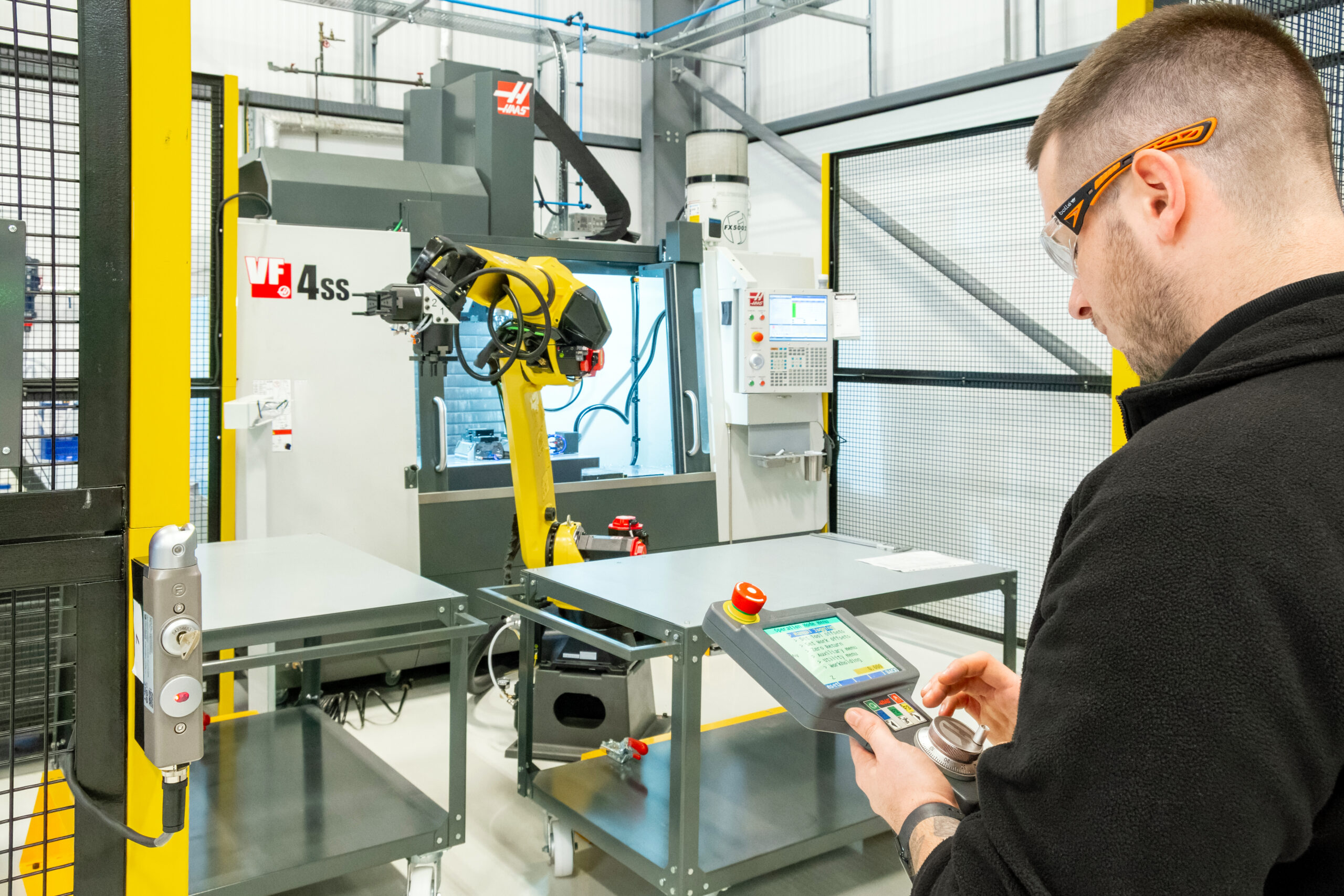
Five turning centres have also been added to the new facility. “The ST-15Y is taking on some work which our smaller lathes were doing, but its larger capacity means we don’t have to cut billets first, we can machine straight from bar. We’ve added a bar puller which again minimises operator handling.
“We ordered three ST-30Ys due to the success we’ve had with our other Haas lathes. They’ve really been excellent performers. The ability to programme the chuck pressure is a significant improvement, as it eliminates the need to stop the machines for adjustments.” The ST-30Y offers extreme rigidity and high thermal stability, all within a medium footprint. The addition of the Y-axis and full C-axis motion allows milling, drilling and tapping for increased machine capabilities.
Ryan explains why they also included their first Haas toolroom lathe in the order. “The TL-1 is perfect for modifying fixtures for the other machines and making smaller parts for the race team. Having this extra lathe means we’re not taking capacity away from the larger machines and production runs more smoothly.
“In every step we’re scaling up the operation. Automation like the pallet pools and the robot system together with the upgrades that Haas constantly make to their machines, ensures we can streamline our processes and free-up staff to do other tasks. By making the machines do more of the work our efficiency rate is up by 25% and we’re getting 50% more manpower on each shift. ”
Three Haas control simulators were part of the new package. “We’re building a dedicated training room,” enthuses Ryan. “We’ll use it to bring on the next generation of operators while also improving the skills of our current workforce. We have two apprentices and we hope to bring many more through our doors and into the factory. Knowing that they have been given the right start helps to integrate them onto the shop floor.” Jota Advanced Engineering is not only investing in skills, but also the wellbeing of its staff. The new facility even boasts a company gym for all to use.
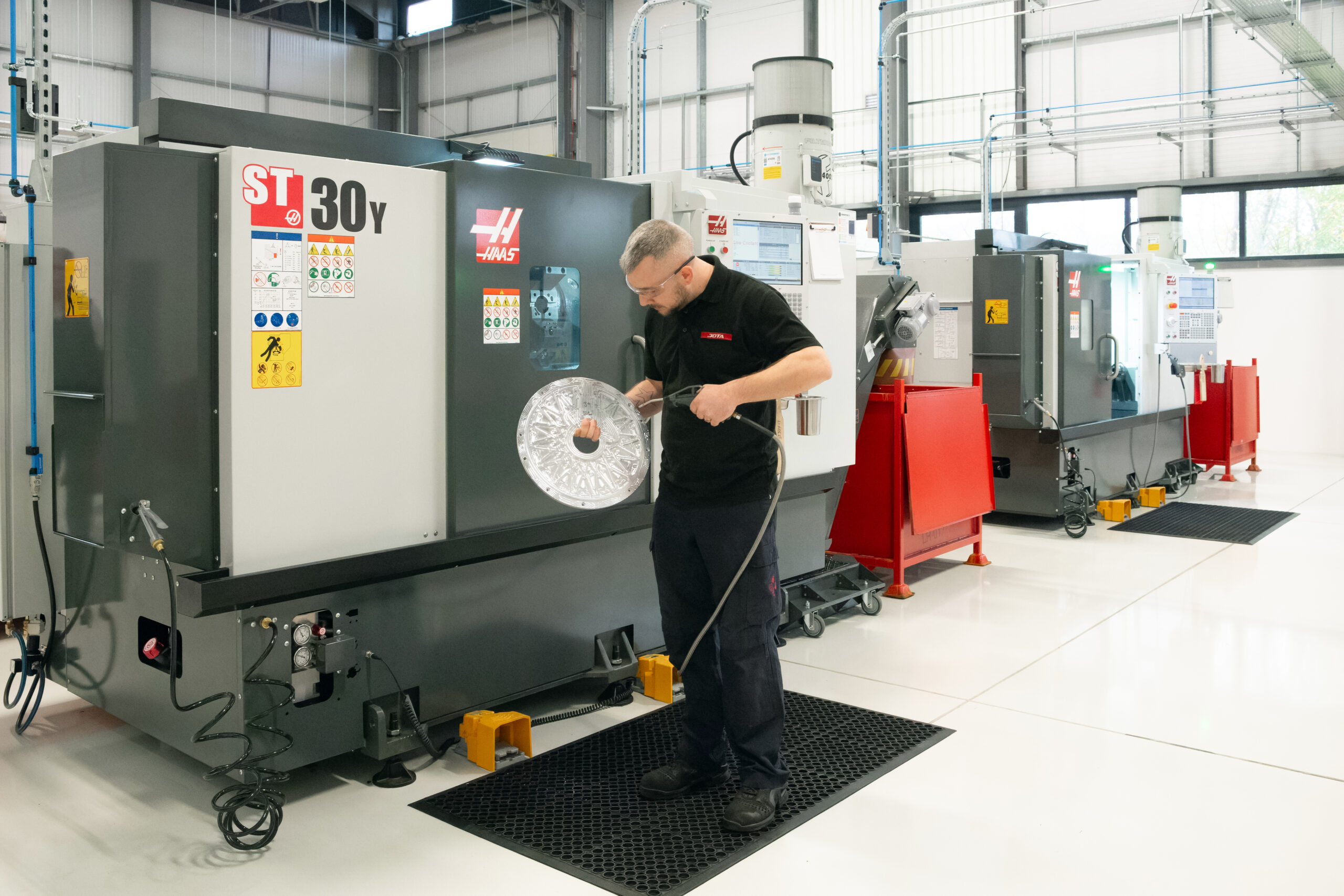
Ryan has played a pivotal role in broadening the variety of industries the company supports, including motorsport, luxury automotive, aviation, power generation, and the scientific and medical sectors. The Haas machines operate in tandem with multiple CMMs and independent inspection equipment to provide a comprehensive turnkey solution. “Our capability to offer 3, 4, and 5-axis milling, along with live-tool turning, allows us to deliver exceptionally precise tolerances. We’re asking the lathes to run to plus or minus five microns and they have no problem achieving this.
“We have always enjoyed a strong relationship with Haas. Don Cole, our Haas salesman, took us to view a DS-30Y at another Haas user, so we saw what the machine can do first-hand and it gave us the confidence to invest. He was particularly flexible with us, picking me up early in the morning to see the machine so that the demonstration worked around my schedule. Then, once we’d ordered the machine, Haas organised the loan of another lathe while our was shipped from USA; they all went the extra mile for us.
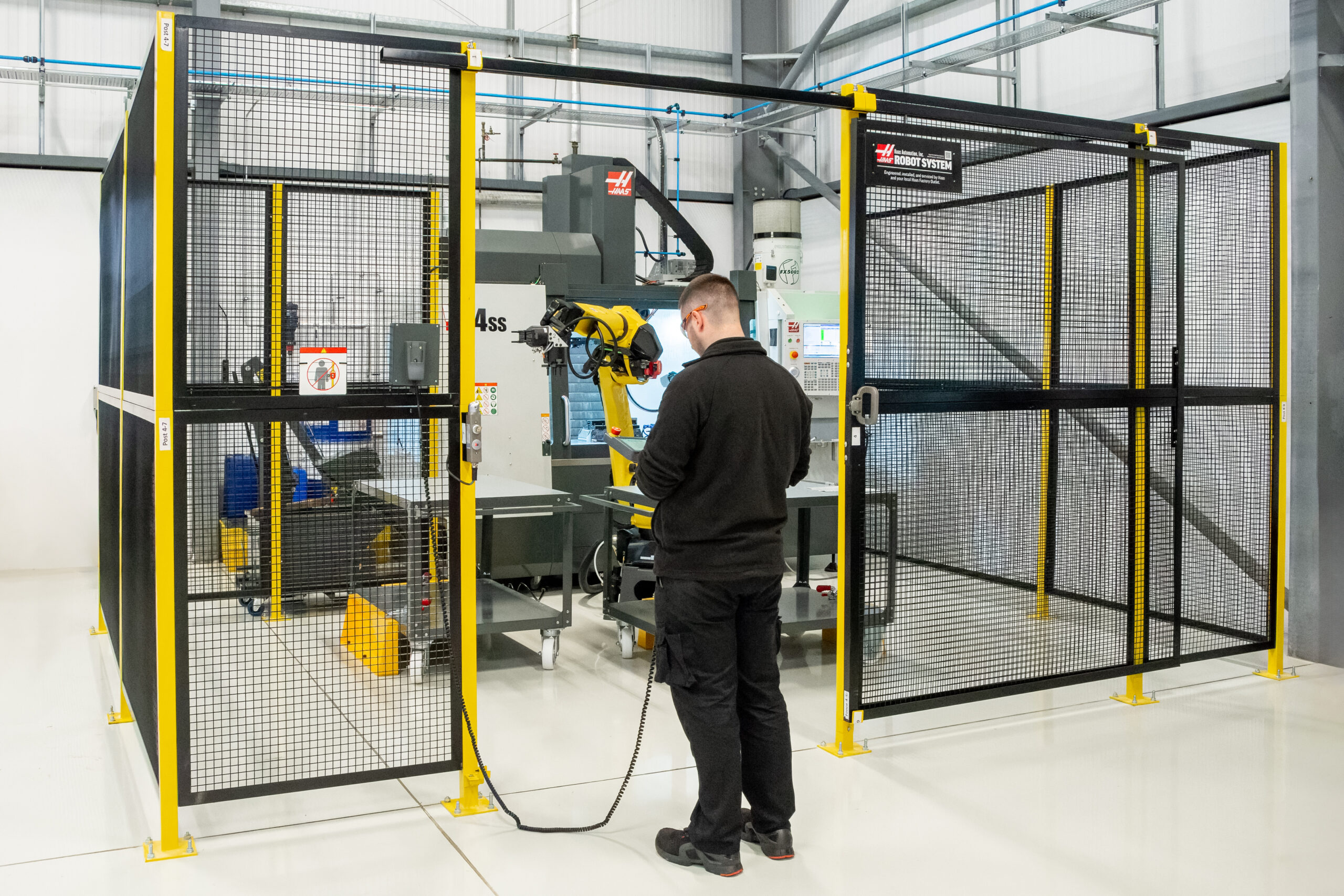
“We’re now supporting major OEMs in the automotive sector, and due to tight timelines, fulfilling new orders would have been challenging without the loan machine. It’s fantastic that Haas has been so accommodating in helping us meet these demands.
“The engineers moved and recommissioned our twelve existing machines to the new factory, while installing the units. It was a large operation, but they worked with us every step of the way. We find the Haas engineers very knowledgeable and are always ready to offer help and support if we need it. Haas services each machine annually to ensure they perform at their absolute best, just as they did when they were new. There’s no reason to consider other options; both Haas sales and support truly are an invaluable asset to our winning team.”
